Pasta Water…Liquid GOLD!
I once heard a very accomplished cook say, “Only fools and amateurs throw away pasta water!” And I couldn’t help but wonder, why? What’s the big deal with pasta water?
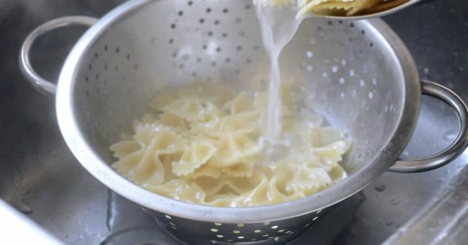
Because pasta is made of flour, it releases starch into the cooking water as it boils, creating a white, cloudy liquid that we often deem “dirty” and then dump down the sink. But this is a huge mistake because, as all professional chefs and avid cooks know, that stuff is “liquid gold.”
This “liquid gold” is what helps emulsify and thicken your sauce. Now you’re probably wondering, “But why would I want to emulsify my sauce? Who even cares?” To answer that question, think about a plate of spaghetti. All too often, it’s encircled by a watery, red puddle. You’ve probably seen how it pools around the edge of your plate and ruins a gorgeous serving of pasta. That puddle results when the water and oil in your pasta and sauce separate from each other.
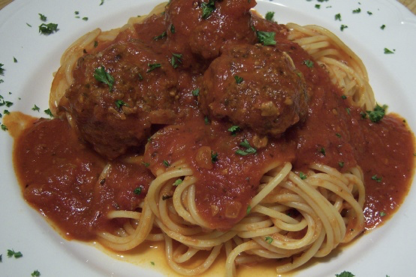
So here’s where emulsification enters the picture. This is the process of blending two liquids that would otherwise repel each other (in the case of pasta, it’s oil and water) into a smooth, inseparable mixture. The starch in your pasta water is an emulsifying agent and also a thickener. If you save some of this water and then slowly mix a ladlefull of it into sauce, you’re binding together the liquids and oils, creating something creamy and thick that won’t ever separate into a puddly mess.
There’s another benefit of using pasta water: By not rinsing your pasta, you allow it to keep a lovely coating of starch that’ll bind the pasta itself to the sauce, creating yet even more harmony on your plate. (Some people also claim pasta water makes your dish more flavorful.)
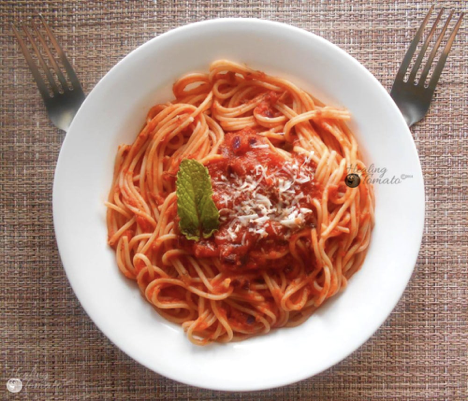
And there’s a bonus. Pasta water works its magic in just about every kind of sauce, not just tomato. It can make an Alfredo sauce less greasy, and it can give a silky texture to a pesto. Who knew?
With all this said, here’s how to save your pasta water. Just choose one of the following methods:
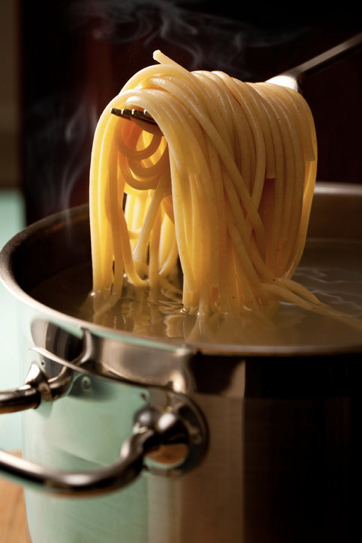
If you’re not yet convinced of the good sense in saving your pasta water, let me conclude with a list of a few clever things you can do with it.
WATER PLANTS. They’ll appreciate it: pasta water is perfect for watering due to its mineral content. Best poured when only lukewarm.
MAKE BREAD AND PIZZA DOUGH. All yeast doughs require some liquid with a pinch of salt. With your pasta water, you're already one step ahead. Simply use however much of it you need for the dough recipe.
STEAM VEGETABLES. Simply use the pasta water as a base, place a steamer basket in the pot and begin. Cooking doesn't get much healthier.
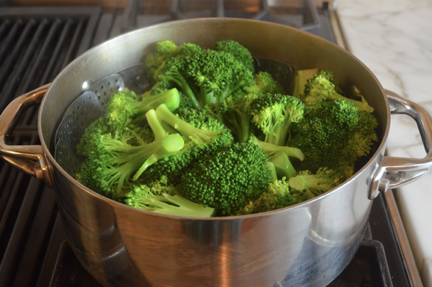
MAKE SOUP. Whether for broth or a soup, the pasta water is a great place to start. After steaming the vegetables, for example, simply add them to the stock (pasta water), let it cook, season it to taste and you're finished!
SOFTEN LEGUMES. Beans, peas, lentils taste even better when you allow them to soften before their preparation. Use your pasta water for the overnight soak and you’ve also given them a mineral and flavor boost!
WASH DISHES. Believe it or not, the extract from pasta starch acts as a natural detergent. Warm pasta water is therefore, perfect for washing up. Even the really dirty pots and pans can be cleaned with it!
SOAK YOUR FEET. (Keep an open mind on this one.) Sore or swollen feet can absolutely benefit from a foot spa using warm pasta water. Both the warm water and the minerals it contains will leave your feet feeling soft and refreshed.
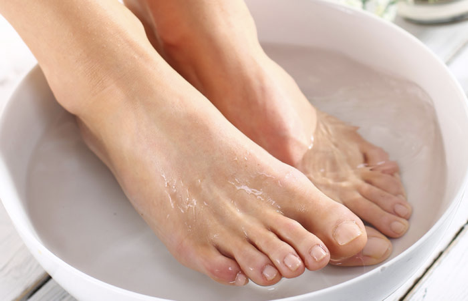
SOAK YOUR HAIR. (Same thing…keep an open mind here.) Soaking in pasta water will make it beautifully smooth. Simply massage it into the hair, leave it for 10 minutes and then rinse it out. Now use your normal shampoo and you'll be astounded by the results.
I know some habits die hard, but next time, fight the reflex to dump out your pasta water. You’ll kick yourself as you watch that precious liquid gold circle the drain.

Because pasta is made of flour, it releases starch into the cooking water as it boils, creating a white, cloudy liquid that we often deem “dirty” and then dump down the sink. But this is a huge mistake because, as all professional chefs and avid cooks know, that stuff is “liquid gold.”
This “liquid gold” is what helps emulsify and thicken your sauce. Now you’re probably wondering, “But why would I want to emulsify my sauce? Who even cares?” To answer that question, think about a plate of spaghetti. All too often, it’s encircled by a watery, red puddle. You’ve probably seen how it pools around the edge of your plate and ruins a gorgeous serving of pasta. That puddle results when the water and oil in your pasta and sauce separate from each other.

So here’s where emulsification enters the picture. This is the process of blending two liquids that would otherwise repel each other (in the case of pasta, it’s oil and water) into a smooth, inseparable mixture. The starch in your pasta water is an emulsifying agent and also a thickener. If you save some of this water and then slowly mix a ladlefull of it into sauce, you’re binding together the liquids and oils, creating something creamy and thick that won’t ever separate into a puddly mess.
There’s another benefit of using pasta water: By not rinsing your pasta, you allow it to keep a lovely coating of starch that’ll bind the pasta itself to the sauce, creating yet even more harmony on your plate. (Some people also claim pasta water makes your dish more flavorful.)

And there’s a bonus. Pasta water works its magic in just about every kind of sauce, not just tomato. It can make an Alfredo sauce less greasy, and it can give a silky texture to a pesto. Who knew?
With all this said, here’s how to save your pasta water. Just choose one of the following methods:
- If you insist on draining your pasta (using either a colander, pasta strainer insert, or just the pot lid) first ladle out a couple cups of the cooking liquid to save.
- For long pastas like spaghetti and fettuccine, you can just use a pair of tongs to move the cooked pasta to a saucepan.
- Fish shorter pastas like macaroni and penne out of the water with a spider skimmer ladle.

If you’re not yet convinced of the good sense in saving your pasta water, let me conclude with a list of a few clever things you can do with it.
WATER PLANTS. They’ll appreciate it: pasta water is perfect for watering due to its mineral content. Best poured when only lukewarm.
MAKE BREAD AND PIZZA DOUGH. All yeast doughs require some liquid with a pinch of salt. With your pasta water, you're already one step ahead. Simply use however much of it you need for the dough recipe.
STEAM VEGETABLES. Simply use the pasta water as a base, place a steamer basket in the pot and begin. Cooking doesn't get much healthier.

MAKE SOUP. Whether for broth or a soup, the pasta water is a great place to start. After steaming the vegetables, for example, simply add them to the stock (pasta water), let it cook, season it to taste and you're finished!
SOFTEN LEGUMES. Beans, peas, lentils taste even better when you allow them to soften before their preparation. Use your pasta water for the overnight soak and you’ve also given them a mineral and flavor boost!
WASH DISHES. Believe it or not, the extract from pasta starch acts as a natural detergent. Warm pasta water is therefore, perfect for washing up. Even the really dirty pots and pans can be cleaned with it!
SOAK YOUR FEET. (Keep an open mind on this one.) Sore or swollen feet can absolutely benefit from a foot spa using warm pasta water. Both the warm water and the minerals it contains will leave your feet feeling soft and refreshed.

SOAK YOUR HAIR. (Same thing…keep an open mind here.) Soaking in pasta water will make it beautifully smooth. Simply massage it into the hair, leave it for 10 minutes and then rinse it out. Now use your normal shampoo and you'll be astounded by the results.
I know some habits die hard, but next time, fight the reflex to dump out your pasta water. You’ll kick yourself as you watch that precious liquid gold circle the drain.
Sources:
- www.tiphero.com
- www.food.com
- www.healingtomato.com
- www.buzzfeed.com
- www.onceuponachef.com
- www.thesun.co.uk
 Alice Osborne
Alice Osborne
Weekly Newsletter Contributor since 2006
Email the author! alice@dvo.com
